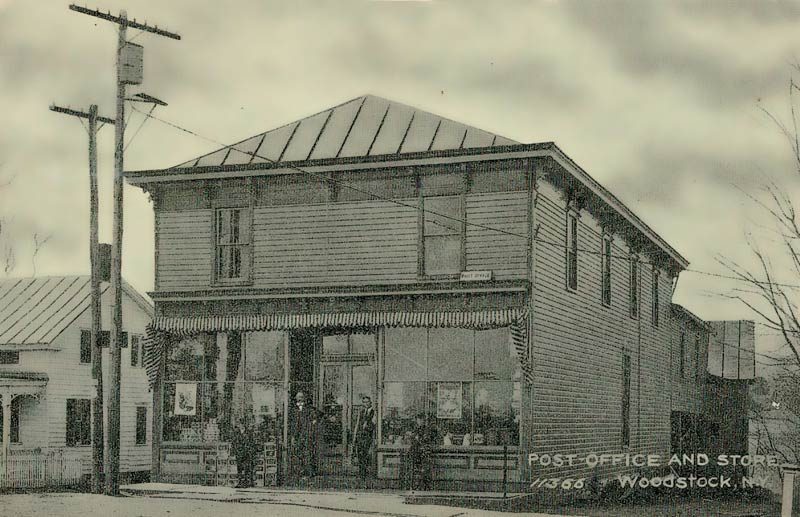
Woodstock postcard, postmarked October 5, 1908
Early Ulster County Post Offices Appearing in Postcards
Winter 2019
Most of the cards below are from about 1910-1930, and the postmarks from 1908 to 1950. Any that are postmarked will be given that date, but the cards could be older. Offices moved around frequently, often because the postmasters were patronage positions until as recently as 1969.
The Woodstock card above is postmarked October 5, 1908. Times were part of the postmark, but not legible on this card. It was sent by “Ed” to Mr. L.W. Smith in New York City.
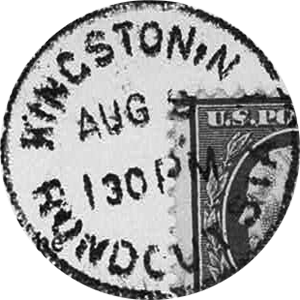 The postmark at right shows the combined Kingston-Rondout postmark. Rondout merged with Kingston in 1872. Prior to that, Rondout was a thriving port village on the Rondout Creek which empties into the Hudson nearby. Much of Rondout that was not demolished during Urban Renewal is on the Register of Historic Places. Below, the Rifton General Store and Post Office also served as a gasoline filling station. SACONY Gas signs show up often in cards from the early 1900s.
The postmark at right shows the combined Kingston-Rondout postmark. Rondout merged with Kingston in 1872. Prior to that, Rondout was a thriving port village on the Rondout Creek which empties into the Hudson nearby. Much of Rondout that was not demolished during Urban Renewal is on the Register of Historic Places. Below, the Rifton General Store and Post Office also served as a gasoline filling station. SACONY Gas signs show up often in cards from the early 1900s.
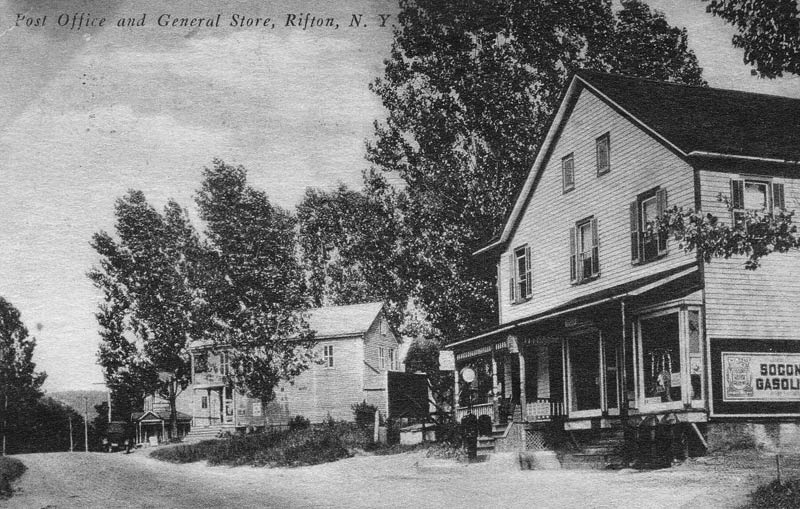
post office and general store, Rifton, NY
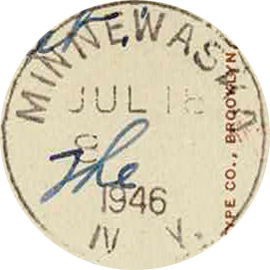
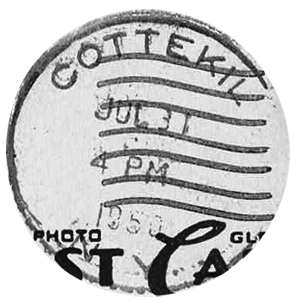 The Minnewaska cancellation mark is from July 9, 1946. The Cottekill stamp was on a card for the Social Relief Society Home. Its face gave images and names of three of the many buildings housing people in need of help. Today, the complex is apartments.
The Minnewaska cancellation mark is from July 9, 1946. The Cottekill stamp was on a card for the Social Relief Society Home. Its face gave images and names of three of the many buildings housing people in need of help. Today, the complex is apartments.
Below, the West Park post office and store owned by F. B. Ackert also shows the SOCONY gasoline availability.

post office, West Park, NY
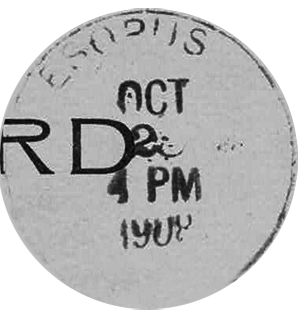 The Town of Esopus, founded in 1811, consists of many small hamlets (small population centers without a local governing body). Connolly, West Park, Esopus, Port Ewen, Rifton, St. Remy, Ulster Park are all within the Town. Esopus has wonderful parks and recreational areas, some bordering the Hudson River. The Town is surrounded by water on three sides–Wallkill and Hudson Rivers, and the Rondout Creek.
The Town of Esopus, founded in 1811, consists of many small hamlets (small population centers without a local governing body). Connolly, West Park, Esopus, Port Ewen, Rifton, St. Remy, Ulster Park are all within the Town. Esopus has wonderful parks and recreational areas, some bordering the Hudson River. The Town is surrounded by water on three sides–Wallkill and Hudson Rivers, and the Rondout Creek.
The hamlet of LOYD, as opposed to the Town of LLOYD, was a cross roads with a trolley connection to New Paltz and Highland. As usual, the post office was housed within a store.
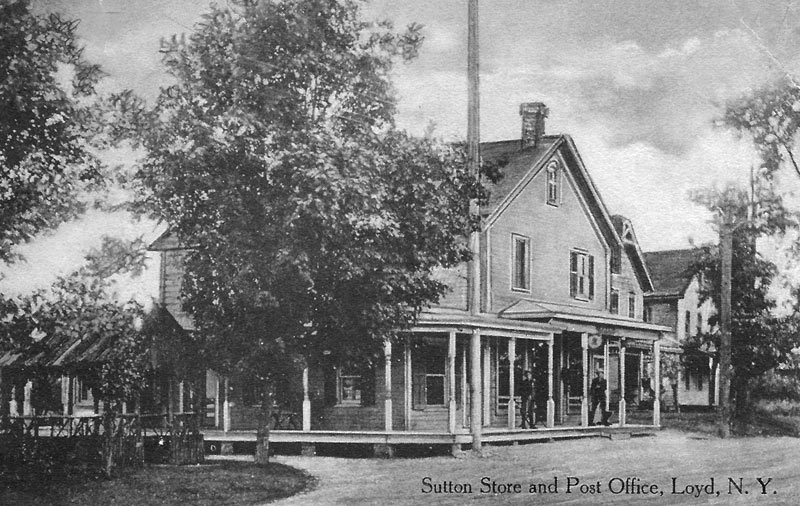
Sutton store and post office, Loyd, NY
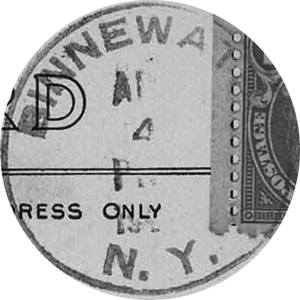 The Minnewaska postal cancellation is one of the later cancels in this article–July 8, 1946. The post office there continued until 1947. Mohonk Lake’s continued until 1957.
The Minnewaska postal cancellation is one of the later cancels in this article–July 8, 1946. The post office there continued until 1947. Mohonk Lake’s continued until 1957.
Tillson is one of the many hamlets in the Town of Rosendale. Others include, Binnewater, Bloomington, Bruceville, Cottekill, Creeklocks, Hickory Bush, High Falls, Maple Hill, Lawrenceville, LeFevere Falls, Whiteport, Kollops Corners, and Rosendale.
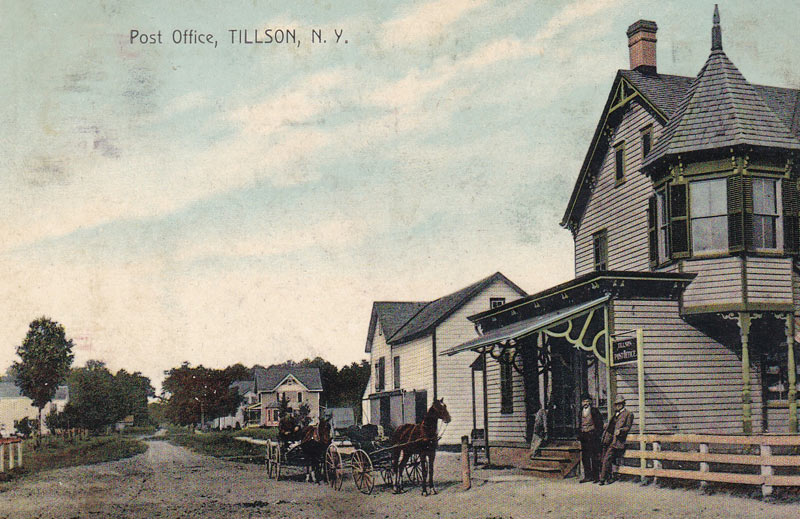
post office, Tillson, NY
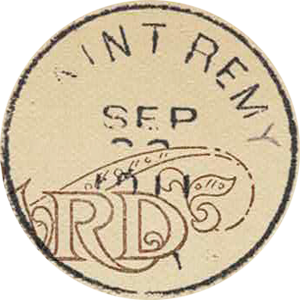 The Saint Remy, Town of Esopus, postmark right is from September of 1911.
The Saint Remy, Town of Esopus, postmark right is from September of 1911.
Highland In The Town of Lloyd
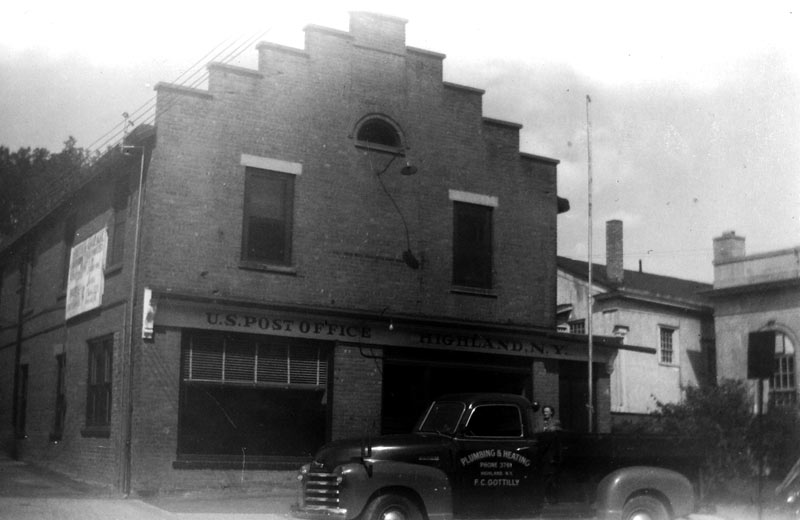
Highland post office
Above, the post office in the Highland hamlet is shown in the early 1940s. That building is now part of the (former) bank complex shown in the color photo in late 1960s at 71 Vineyard Avenue. On the right side of the black and white photograph you can see the side window of the First National Bank of Highland. The space between the two buildings was filled in with a more modern structure and it became one property, now for sale, as pictured in the color photo.

Highland is within the Town of Lloyd, and the Town’s offices are housed in what was the first Highland post office built for that purpose. A second story was added and it now serves as the Town Hall.
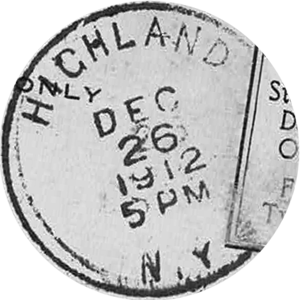
It has always been confusing for residents and visitors alike that the postal designation “Highland, NY 12528,” covers the town, but there is no Highland town, just an unincorporated village. Further confounding residents is the fact that 12528 mailing addresses are not all in Lloyd.
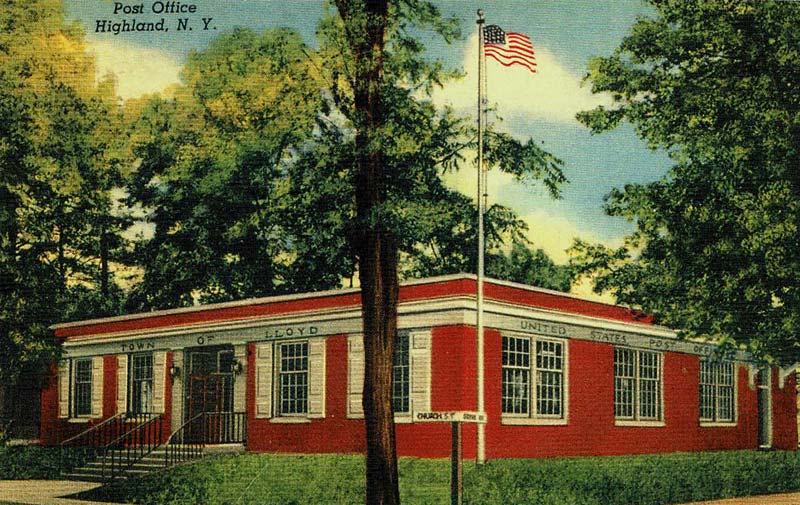
Town of LLoyd post office, Highland, NY
To make matters more interesting, no one knows where the double-L “Lloyd” name originated. Town historians and history enthusiasts have done extensive research. Most recently, Joan Kelly, a veteran researcher came up with some fascinating ideas, but not all are convinced. She discovered there had been a person named “Lloyd” who held large tracts of land near the current Town. Kelly suggested that it was often the case that a town would be named for someone of great standing in a community. Others believe the town’s name was derived from the single-L, LOYD hamlet. Loyd was not far from the meeting site where the Town of Lloyd was organized after it broke away from the Town of New Paltz in 1845.
